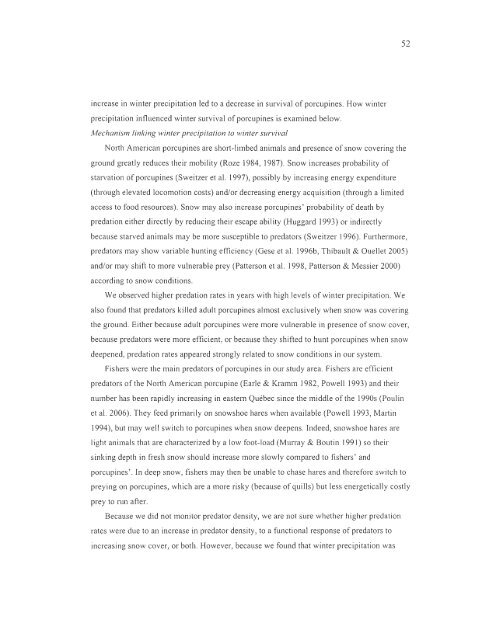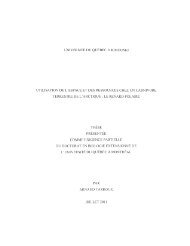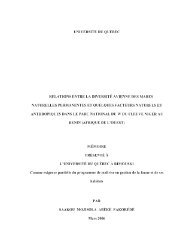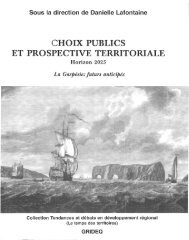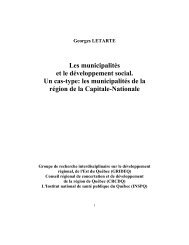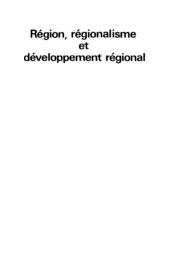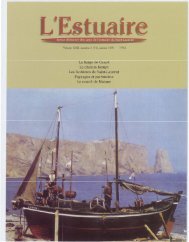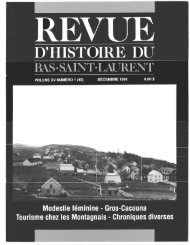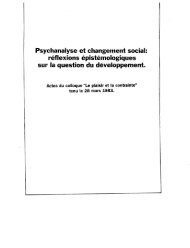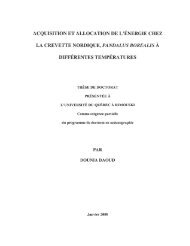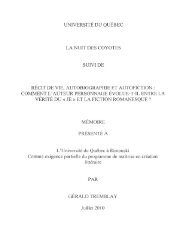influence du climat et de la prédation sur l'utilisation de l'habitat et la ...
influence du climat et de la prédation sur l'utilisation de l'habitat et la ...
influence du climat et de la prédation sur l'utilisation de l'habitat et la ...
You also want an ePaper? Increase the reach of your titles
YUMPU automatically turns print PDFs into web optimized ePapers that Google loves.
52<br />
increase in winter precipitation led to a <strong>de</strong>crease in <strong>sur</strong>vival of porcupines. How winter<br />
precipitation <strong>influence</strong>d winter <strong>sur</strong>vival of porcupines is examined below.<br />
Mechanism linking winter precipitation to win ter <strong>sur</strong>vival<br />
North American porcupines are short-limbed animais and presence of snow covering the<br />
ground greatly re<strong>du</strong>ces their mobility (Roze 1984, 1987). Snow increases probability of<br />
starvation of porcupines (Sweitzer <strong>et</strong> al. 1997), possibly by increasing energy expenditure<br />
(through elevated locomotion costs) and/or <strong>de</strong>creasing energy acquisition (through a limited<br />
access to food resources). Snow may also increase porcupines' probability of <strong>de</strong>ath by<br />
predation either directly by re<strong>du</strong>cing their escape ability (Huggard 1993) or indirectly<br />
because starved animais may be more susceptible to predators (Sweitzer 1996). Furthennore,<br />
predators may show variable hunting efficiency (Gese <strong>et</strong> al. 1996b, Thibault & Ouell<strong>et</strong> 2005)<br />
and/or may shift to more vulnerable prey (Patterson <strong>et</strong> al. 1998, Patterson & Messier 2000)<br />
according to snow conditions.<br />
We observed higher predation rates in years with high levels ofwinter precipitation. We<br />
also found that predators killed a<strong>du</strong>lt porcupines almost exclusively when snow was covering<br />
the ground. Either because a<strong>du</strong>lt porcupines were more vulnerable in presence of snow coyer,<br />
because predators were more efficient, or because they shifted to hunt porcupines when snow<br />
<strong>de</strong>epened, predation rates appeared strongly re<strong>la</strong>ted to snow conditions in our system.<br />
Fishers were the main predators of porcupines in our study area. Fishers are efficient<br />
predators of the NOith American porcupine (Earle & Kramm 1982, Powell 1993) and their<br />
number has been rapidly increasing in eastern Québec since the middle of the 1990s (Poulin<br />
<strong>et</strong> al. 2006). They feed primarily on snowshoe hares wh en avai<strong>la</strong>ble (Powell 1993, Maltin<br />
1994), but may weil switch to porcupines when snow <strong>de</strong>epens. ln<strong>de</strong>ed, snowshoe hares are<br />
light animais that are characterized by a low foot-load (Murray & Boutin 1991) so their<br />
sinking <strong>de</strong>pth in fresh snow should increase more slowly compared to fishers' and<br />
porcupines'. ln <strong>de</strong>ep snow, fishers may then be unable to chase hares and therefore switch to<br />
preying on porcupines, which are a more risky (because of quills) but less energ<strong>et</strong>ically costly<br />
prey to run after.<br />
Because we did not monitor predator <strong>de</strong>nsity, we are not <strong>sur</strong>e wh <strong>et</strong>her higher predation<br />
rates were <strong>du</strong>e to an increase in predator <strong>de</strong>nsity, to a functional response of predators to<br />
increasing snow coyer, or both. However, because we found that winter precipitation was


